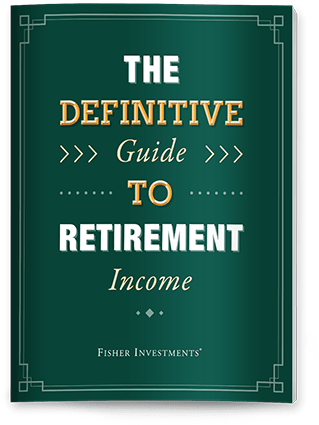Personal Wealth Management / Financial Planning
Don’t Let the Tax Tail Wag the Portfolio
Taxes alone shouldn’t drive your investment decisions.
October is the month of scary creepy crawlies, and what creepy crawly scares investors into action (or inaction) more than taxes? We get it—we also prefer having more of our dollars to spend as we wish. But investors should take care not to take this belief too far, as letting tax considerations dictate investment decisions can steer you from your goals.
There are myriad ways to reduce taxes’ sting. For some, it is as simple as socking money away in tax-deferred accounts versus Roth versions. Or choosing which state to reside in. But it, of course, can also get way more complex.
As we touched on last month, some vehicles are designed to minimize the US taxman’s take. For example, an exchange fund (not to be confused with an exchange-traded fund) allows investors to exchange a concentrated stock position—which could have large embedded capital gains—for a diversified pool of stocks. The cost basis will be the same as it was on the original position, and the investor can defer capital gains taxes until they sell. But therein lies the rub: You must hold the fund for seven years (or face penalties for early redemption). The price of not paying an immediate capital-gains tax is illiquidity. This is less a tax reduction tool than a delay-and-diversify tool, and you aren’t necessarily even in total control of which securities you are diversifying into—potentially problematic from a strategy standpoint.
Americans aren’t the only ones looking for tax minimization. In the UK, some investors seek Aim (Alternative Investment Market) shares for their Isa or pensions thanks to their tax advantages (e.g., exemptions from capital gains and dividends taxes, as well as inheritance tax). But risks accompany those tax benefits. Aim shares reflect Britain’s smallest firms, with no minimum size requirement or trading history, and these tend to be much more volatile than larger, more established companies. This corner of the market also has a history of scandals and failures alongside success stories. Buying into a much more volatile investment simply for tax reasons could end up being more costly over the long term, and while past performance isn’t indicative of future returns, FTSE’s AIM All Share has badly trailed the FTSE All Share since 2000 (-46% to 301%).[i]
There are ways to approach tax mitigation that work with your strategy rather than alter it. They aren’t magic. And everyone’s tax situation is different, so nothing here is personalized tax advice. Consult with your tax professional to determine which strategies and tactics are optimal for you. But here are some ways US investors can manage their tax burden.
Opportunistically Harvesting (Gains or Losses)
Concentrated positions can build up for several reasons, from companies’ equity compensation benefits to a single holding’s long run of outperformance. One way to diversify is to split gains across tax years. For instance, an investor can sell part of a concentrated position at the end of 2025, another portion in 2026 and more in early 2027—which can end up reducing the capital-gains tax you may owe.
Relatedly, tax-loss harvesting—selling securities that have declined since purchased—can offset taxable capital gains. Now, this isn’t a strategy move. You aren’t selling the stock for any fundamental reason. Rather, this is strictly a tax-mitigation move, as we think tax-loss selling done properly means selling a stock at a loss, using the proceeds to purchase a replacement security to retain equity exposure and then reconsidering purchasing the original position 30 days after the original sale. (The 30-day window is the wash-sale period. If you sell something too soon or buy it back too quickly, the IRS will disallow the loss.)
Balancing Traditional and Roth IRAs
Both traditional and Roth IRAs allow assets to grow tax-free, but they tax contributions and withdrawals differently. For traditional IRAs, contributions are pre-tax—meaning you may be able to deduct the money from your income and pay less tax now—but withdrawals are taxed at ordinary income tax rates. In contrast, you fund a Roth IRA with post-tax income, but any withdrawals—principal, interest or gains—are tax-free.
A traditional IRA also comes with the required minimum distribution (RMD) wrinkle (not the case for a Roth). At age 73, investors must start taking this distribution, at which point they have to pay income tax.[ii] A potential benefit is that because you will likely have lower taxable income than in your working years, the tax rate you pay on distributions will be lower.
But there are further ways to mitigate, as making withdrawals based on your accounts’ tax statuses can help minimize taxes’ effect on your finances. For example, if you have a taxable brokerage account, a traditional IRA and a Roth 401(k), it may make sense to draw from the IRA first to avoid a larger RMD later (which increases your taxable income). Or, perhaps it would be wiser to draw from your taxable account first so your tax-advantaged accounts can continue to grow. It really depends on your personal situation and whether you anticipate paying a higher or lower effective tax rate in the future than you are today.
As for converting traditional IRAs into a Roth IRA for tax reasons, the calculus can get complicated. You have to pay income tax on the amount you convert, which adds to your taxable income—and could put you in a different top tax bracket (and subject to a higher rate for that portion of your income). Again, everyone’s situation is different, as some investors have the option to contribute to a Roth 401(k)—so keeping a traditional IRA may make sense for them for tax diversification purposes.
Charitable Contributions
For those investors required to take RMDs and have the means, you can use some or all of your RMD for a qualified charitable distribution (QCD). Besides satisfying your RMD, a QCD excludes the donated amount from your gross income—meaning the RMD won’t boost your income. For 2025, the annual maximum is $108,000 per individual (or $216,000 for married couples filing jointly).
These tactics and strategies aside, don’t lose sight of the bigger picture: Taxes are one consideration affecting personal finances, but they shouldn’t drive your investment strategy. Again, we empathize with those who are loathe to hand over their hard-earned money to the government. But sacrificing liquidity or potential long-term returns could end up being a bigger setback to your financial future than a tax payment. Remember why you are investing: to reach your investment goals, not to dodge Uncle Sam (who will always take his bite). Being smart about taxes can help, but going above and beyond to avoid the taxman can be counterproductive. Adjusting your plan and life because of taxes gets the priorities backward, in our view.
If you would like to contact the editors responsible for this article, please message MarketMinder directly.
*The content contained in this article represents only the opinions and viewpoints of the Fisher Investments editorial staff.
Get a weekly roundup of our market insights
Sign up for our weekly e-mail newsletter.

See Our Investment Guides
The world of investing can seem like a giant maze. Fisher Investments has developed several informational and educational guides tackling a variety of investing topics.





